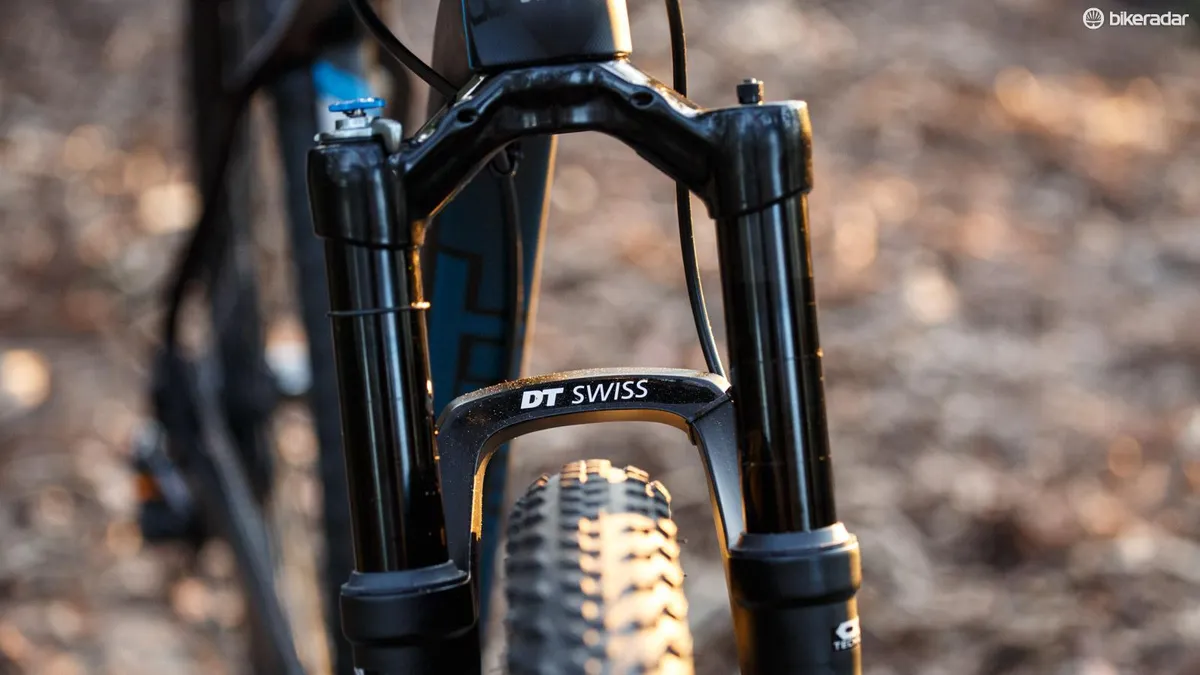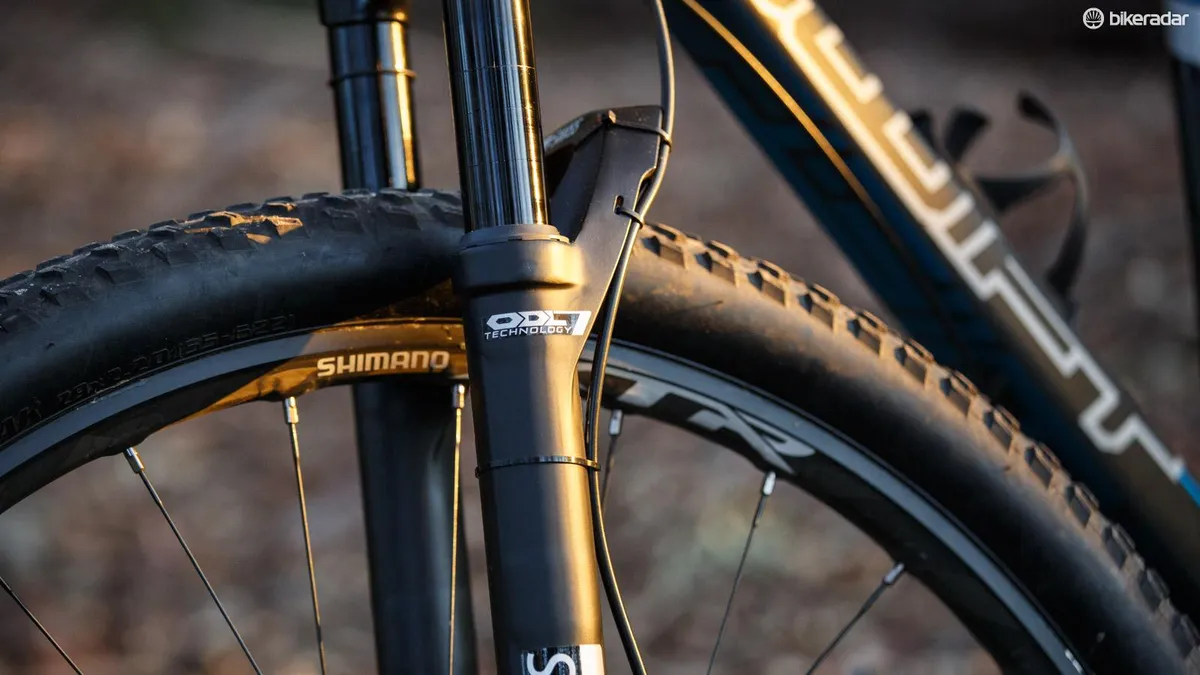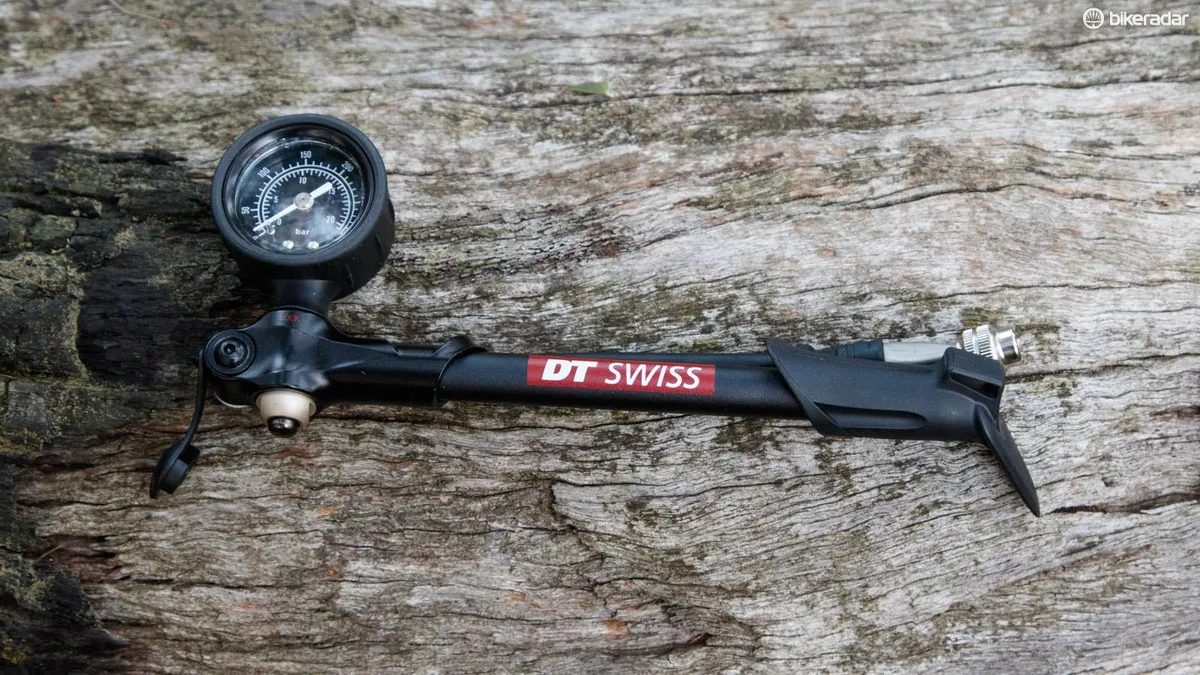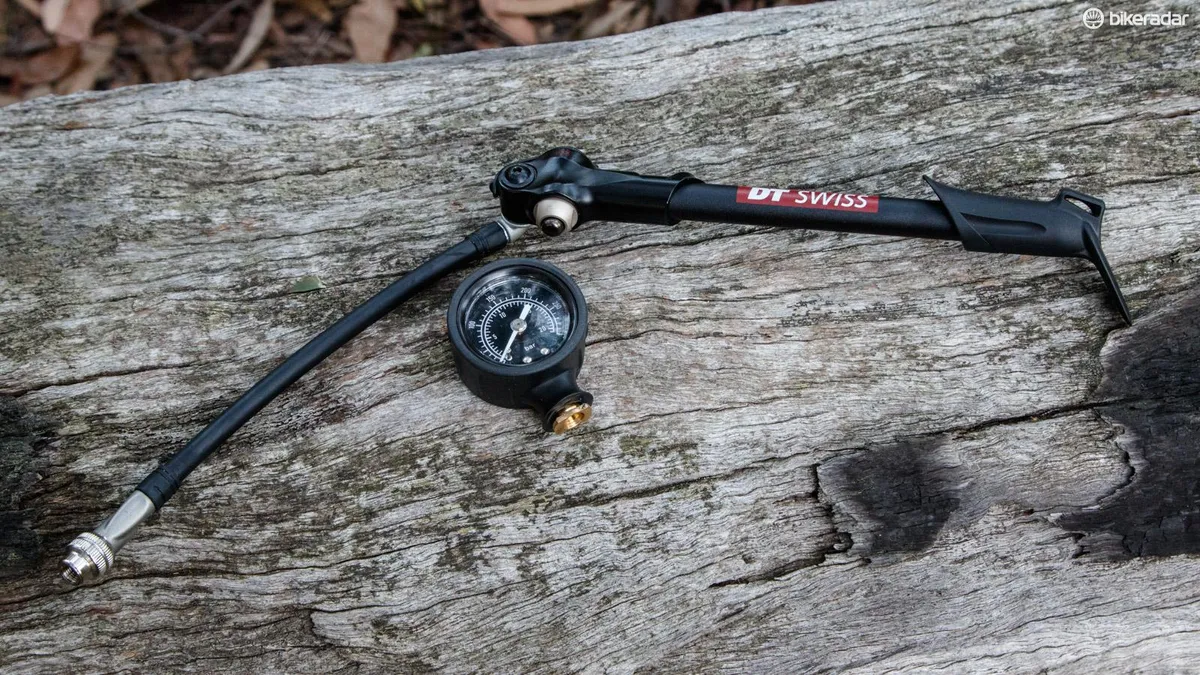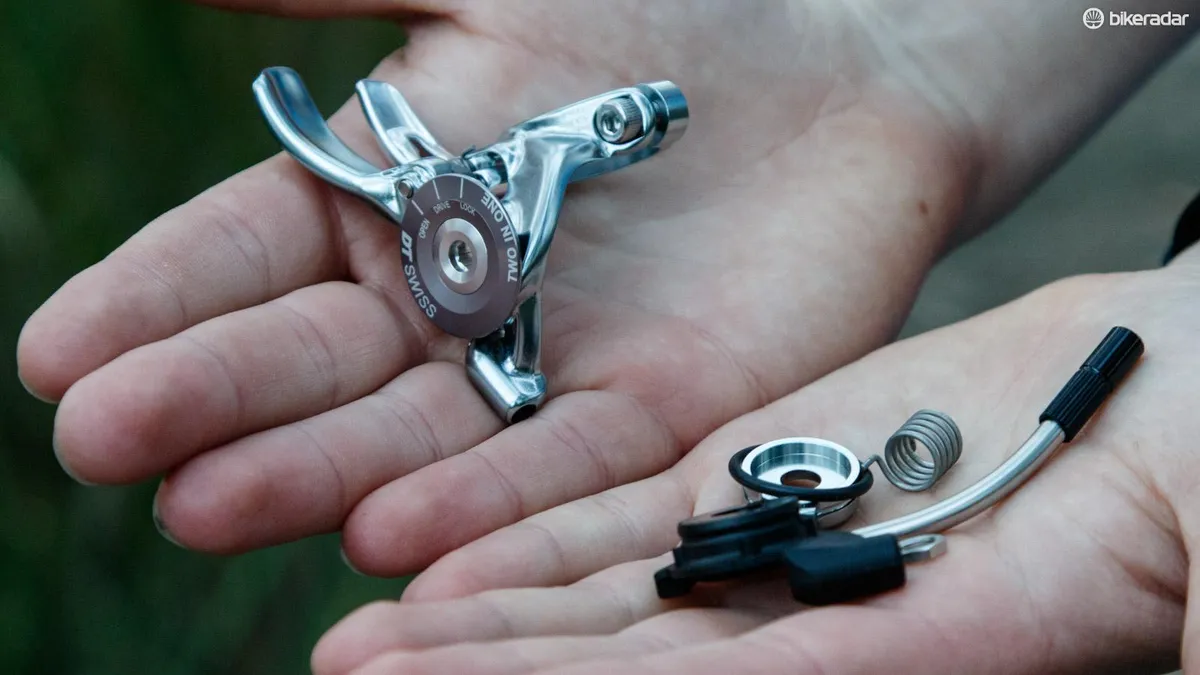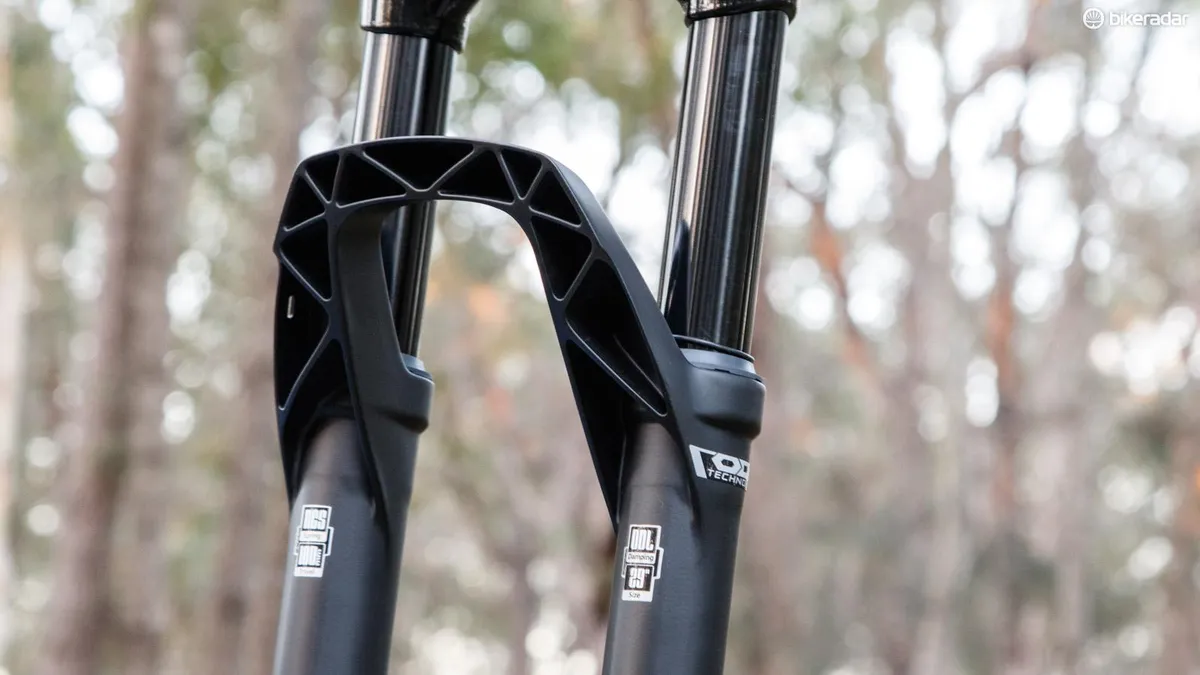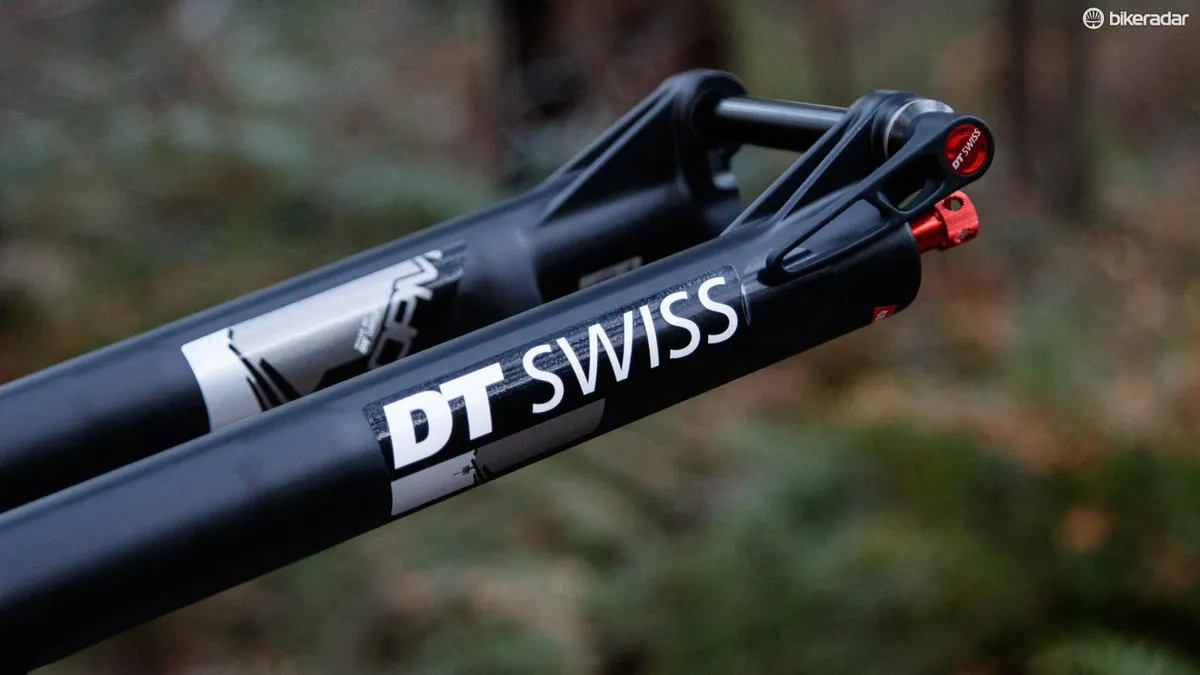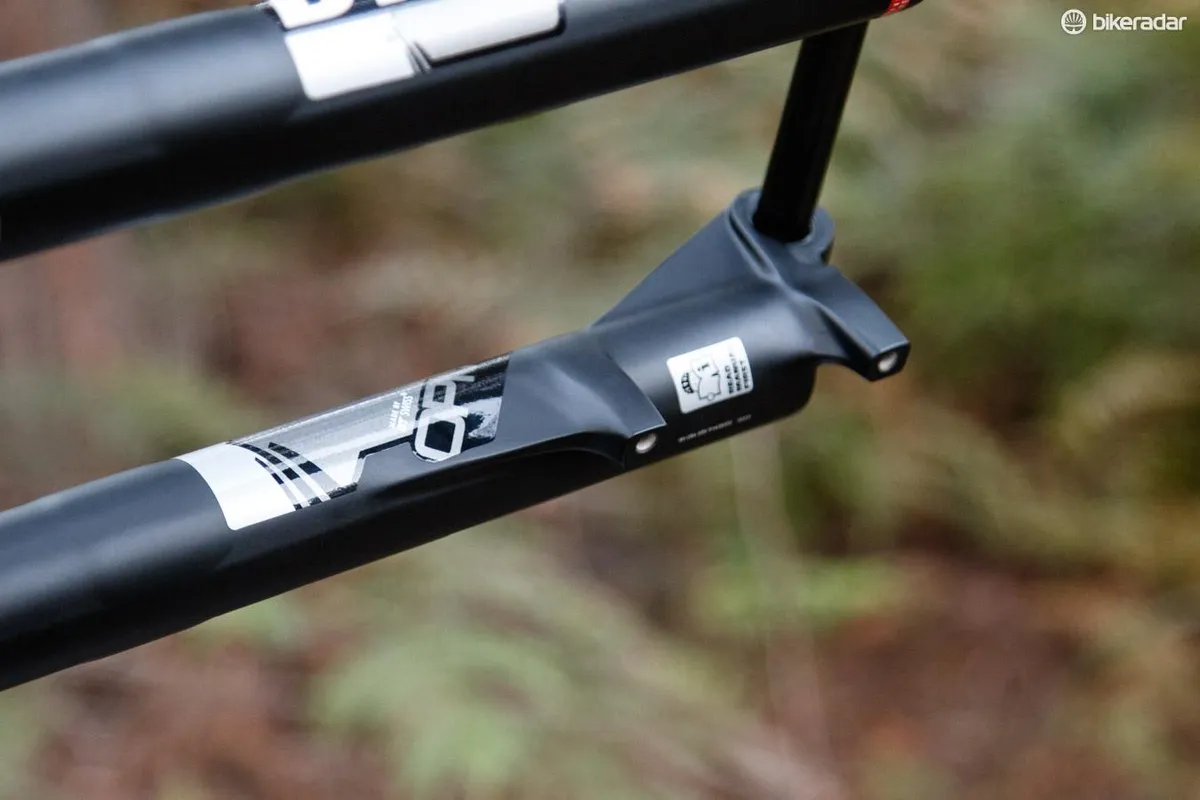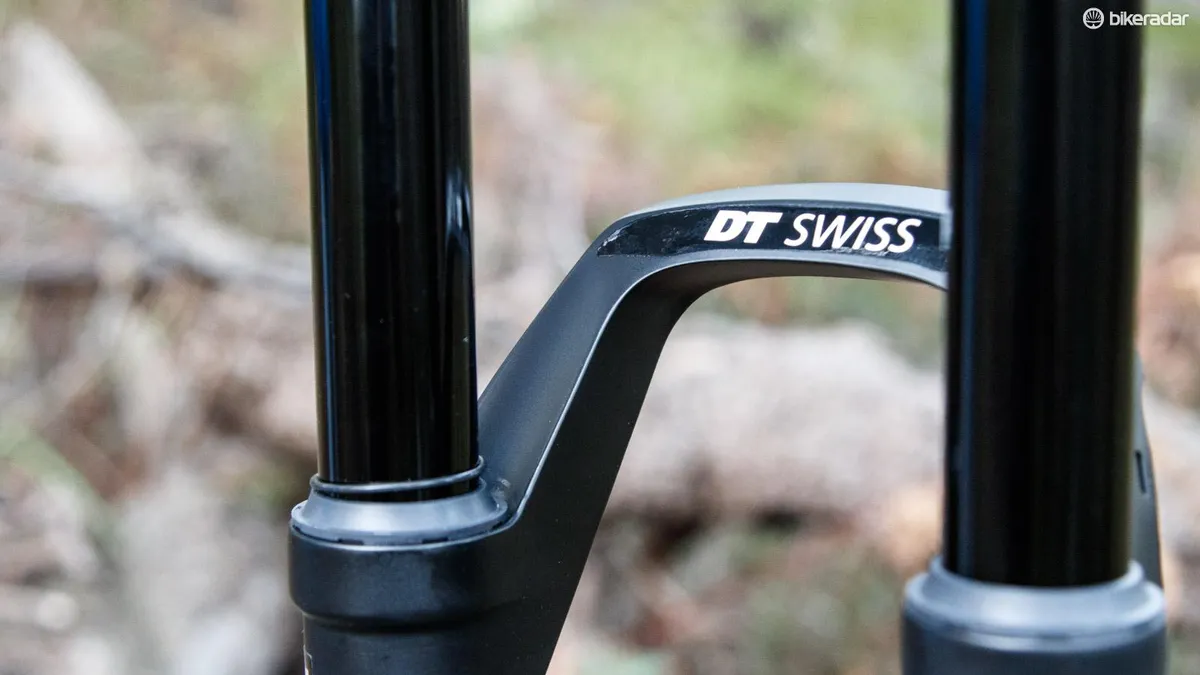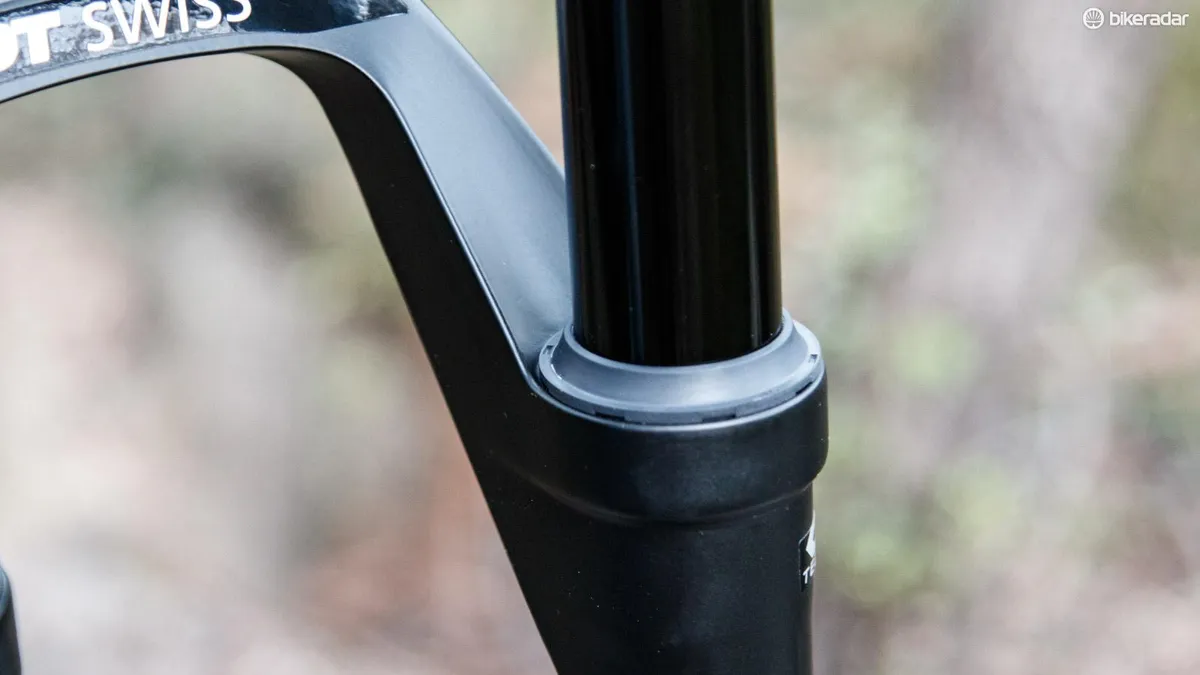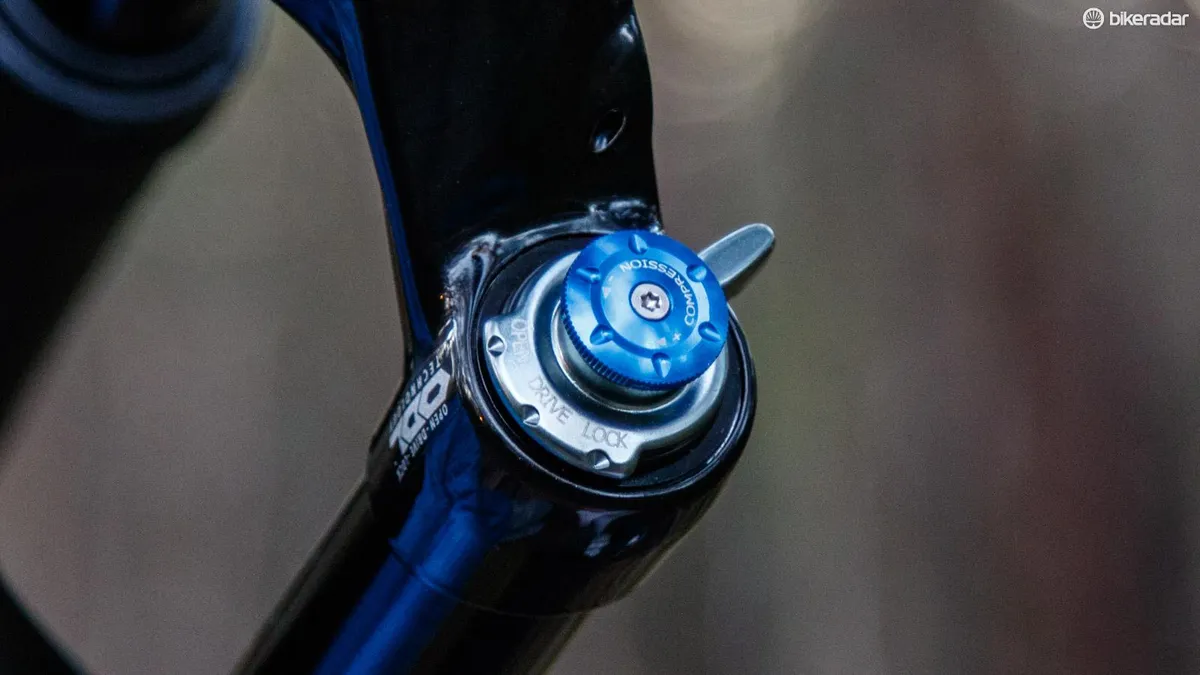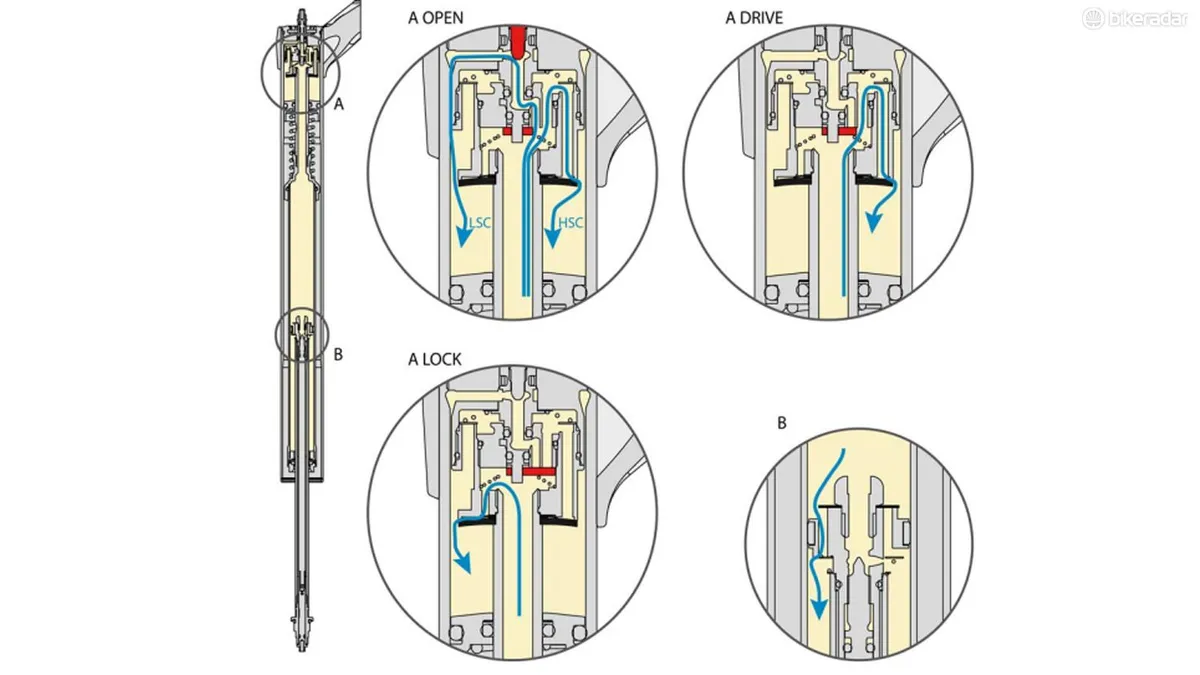Two players – RockShox and Fox – undoubtedly dominate the suspension market. Walk into a bike store, look at the mountain bikes and you’re unlikely to see anything else.
Accordingly, you don’t often come across suspension products from DT Swiss, a brand that's well respected for its wheel components.
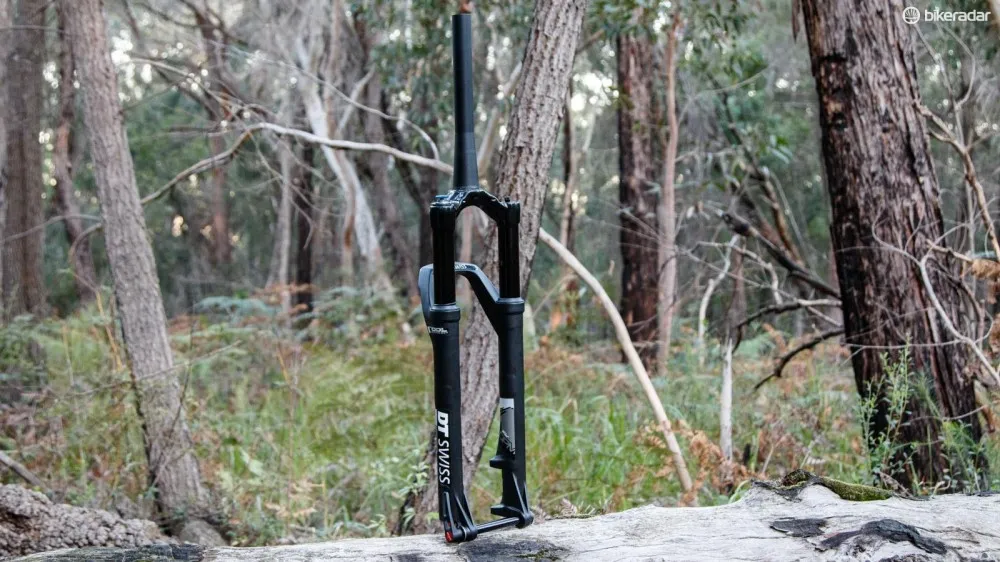
The Swiss-company’s fork offerings came about with the acquisition of Pace’s fork business in 2006.
Since then, the fast descending Nino Shurter has raced DT's products to numerous rainbow stripes and yet the product is still rarely spoken of. Wondering why, we slapped a 100mm-travel 29in OPM onto the front of our SwiftCarbon cross-country test rig.
What those letters mean

The DT Swiss forks feature impressively stiff lowers
Suspension brands tend to use confusing acronyms to detail the features on offer, and DT Swiss is no exception to this custom. In the product name, the OPM simply stands for the construction of the lower legs – ‘one piece magnesium’. It’s these lower legs that set DT Swiss' unique aesthetic, with a reverse arch that’s deeper and more hollowed out than much of its competition.
The next in the name is ODL or ‘Open, Drive, Lockout’ and refers to the damper used within. Here, a three-position compression damper is given that's controlled via a crown-mounted lever. There’s a remote control kit available separately for those seeking a more race-focused setup, something that we used in the second half of our test period.
The rest of the numbers are rather obvious. The 100 stands for the amount of travel on offer, with the same model fork also available in longer travel variants with similar 32mm stanchions and OPM lowers. And the ‘29’ is simply the wheelsize, but a 27.5in version of the same fork is available too.
The technical details
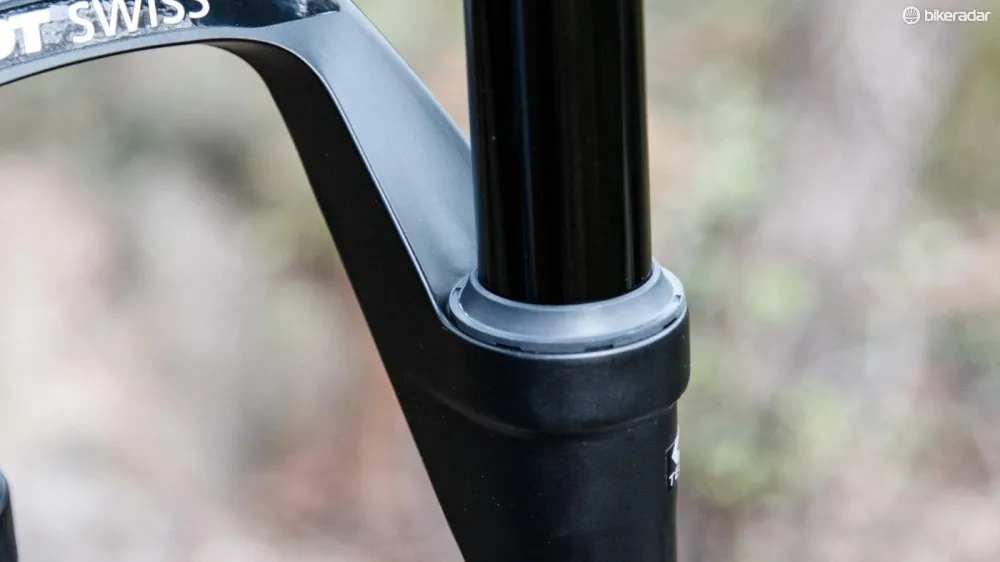
New wiper seals for 2016 make a marked differenc, according to DT
Not much changed in this product for 2016, with the key difference being a move to SKF low friction wiper seals. DT Swiss claims these improve sealing and durability, while reducing stiction by 50% over the previous seals.
Build quality is high, with the external adjustment dials all machined alloy, black-coated stanchions and those angular OPM lowers. Aesthetics are understated, but frankly look great on the front of a black bike.
Our 29in sample weighs 1.63kg with an uncut alloy steerer and thru-axle. For 2016, DT Swiss added another option to its lineup in the form of a ‘Race’ version. The key difference is the carbon crown and steerer, an upgrade that shaves a further 130g off this already light fork.
Given its cross-country focus, weight is certainly a big selling feature and the alloy crown and steerer version is still marginally lighter then the likes of a RockShox RS-1 or Fox Factory 32 fork.
Where some brands such as Fox offer a range of steerer tube, axle standard and dropout offset options, DT Swiss has kept it simple with effectively a single option for the given wheel size. For this, the OPM ODL is only available in a 1.5 (1/2) to 1.125in (1/8) tapered steerer, 15mm thru-axle and 45mm offset.
This dropout offset is a key difference compard with the other leading 29er forks on the market, which typically come in a choice of 46 or 51mm: something that helps customize the handling of the bike. The DT Swiss’ 45mm is only a hair shorter than the most commonly used 46mm, and sits perfectly on frames designed for this. However, some 29ers are specifically designed for longer offset forks, such as those from Trek, and so here the DT should be overlooked.
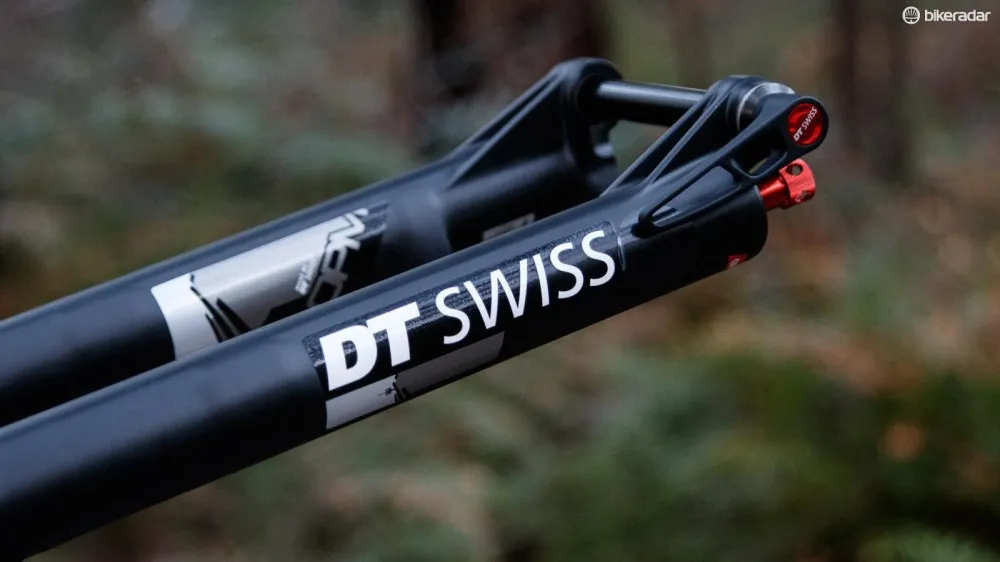
DT Swiss' RWS skewers are top quality
The fork comes supplied with a DT Swiss 15mm RWS thru-axle, a system we like for its simplicity and reliability. To tighten, you simply wind it clockwise from the non-drive side until tight. You can then pull outward on the lever and freely rotate it to any preferred position. To undo, just reverse these steps.
Brake hose routing is less refined and requires the use of conventional cable ties. For additional security, we added a cable tie to the upper part of the crown, and another at the fork leg. It may not be the prettiest setup or what DT Swiss intended, but it works perfectly.
Although not cheap at £750 / €859 / US$1,159, in most territories this DT Swiss fork is comparable with equivalent pro-level race forks. Even after adding another £70 / €67 / US$89 for the ODL remote kit, it’s still competitive, especially given the fork includes a quality DT Swiss shock pump.
The exception is if you’re in the US, where the DT Swiss sits at a premium to the likes of a Fox Factory at $843.
Setup and adjustments
Setup for up this fork is extremely similar to that of a RockShox SID or Fox Float. The left side houses an air spring with the valve on top of the crown. The damper on the right offers rebound control at the bottom of the fork, and low speed compression adjustment up top.
We found DT Swiss’ recommended pressure settings got us close, but ended up running less for our desired sag. Beyond this, there’s little customization available and you have no options for varying the air chamber volume like seen on the RockShox RS-1 or other brands' bigger travel forks.

A simple low-speed compression adjuster sits on top of the three-position O.D.L damper switch
The low speed compression can be adjusted via the blue dial on top and only affects the ‘Open’ mode setting of the damper. In the simplest terms, this allows you to set a slight platform on your suspension depending on the feel you’re going for. For us, we used it all the way open for better small bump sensitivity, and then relied on the Drive setting for when a firmer feel was wanted.
However, it is possible to set the open setting firm to initial compressions. It’s something that aggressive riders who regularly ride out of the saddle may prefer as it’ll prevent the fork from dipping between pedal strokes.
Serviceability
No matter the brand, suspension components will need regular maintenance in order to keep them working at their best.
There’s nothing overly complex here, with oil and seal servicing being a relatively straightforward affair with only basic tools needed. For example, the left side houses a proven system of a standard positive air spring and a steel coil negative spring.
The new SKF seals have proven extremely durable for us, and should help to reduce service intervals too.
However, one key issue to be wary of is spare parts availability and it’s unlikely that your local shop will have DT Swiss fork seals in stock. Of course, knowing this does mean you can order some spares in advance of needing them.
On the trail
Despite its relatively simple internals, this fork behaves well over a variety of terrain with few surprises in its bump absorptions or rebound characteristics.
With the low speed compression fully open, it’s not as sensitive as a Fox Float Factory on smaller bumps. However, the new SKF seals do wonders to make it noticeably smoother than the fork of a season ago.
Its stroke is quite progressive after the mid stroke, with a clear ramp up in the last third of the travel that prevents the fork from diving. Those seeking a softer feel will be able to take advantage of this by reducing the air pressure and then relying on the Drive and Lock modes for pedalling efficiency.
Like many other cross-country race forks, high-speed compression is pre-set through a shim stack. Thankfully, this fork does well to provide support over larger obstacles and faster repetitive hits.
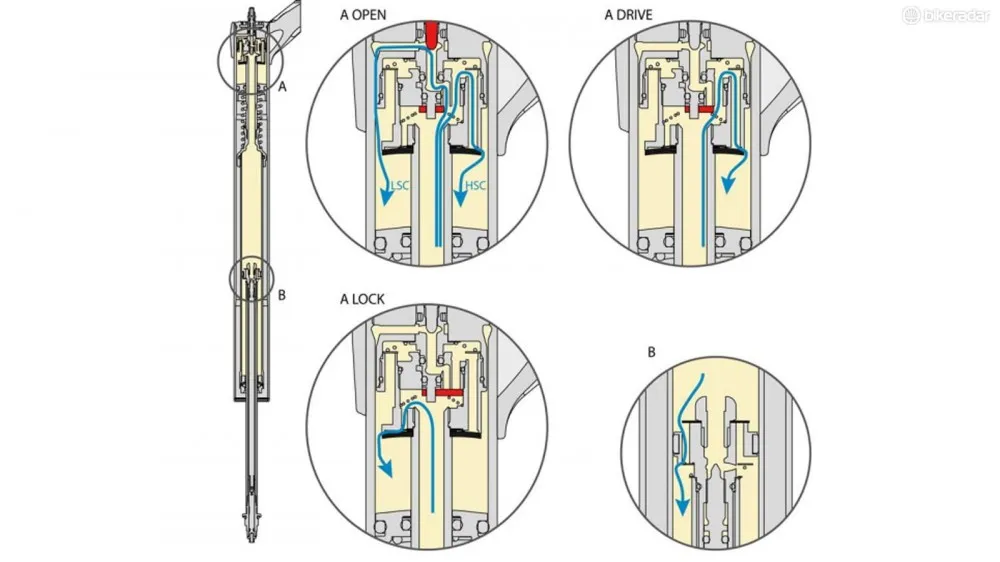
The damper is fairly basic but effective in this amount of travel. LSC = low speed compression. HSC = High speed compression.
The ‘Drive’ setting works by closing off the low speed compression circuit, adding a clear platform to prevent bobbing of the fork. Hit an obstacle and it’ll react, but it’ll be stiff to smaller objects.
The lock function is certainly stiff and with no perceptible movement. There is a safety blow off valve for extremely large impacts to protect the fork’s internals, but our most furious sprinting doesn’t activate it.
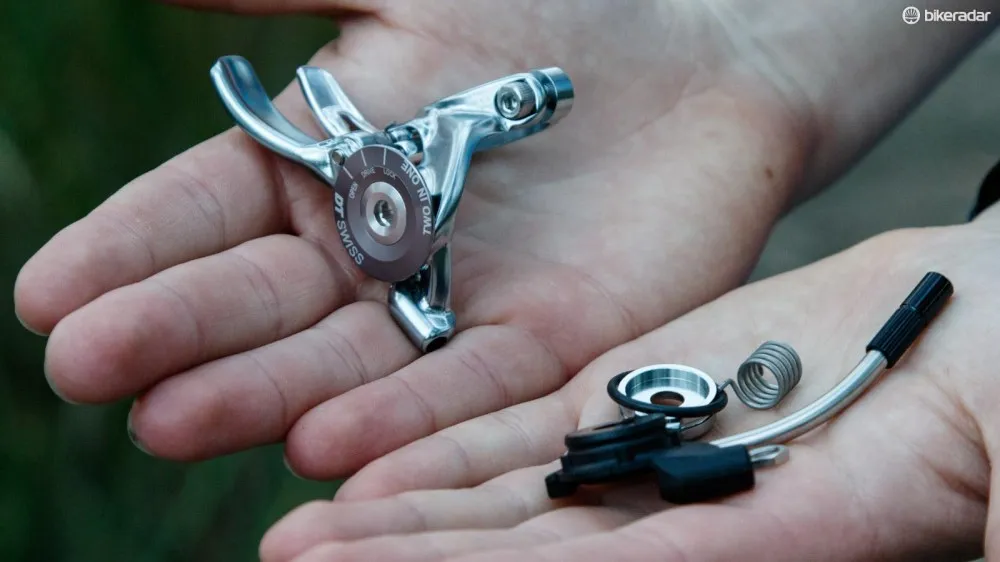
The remote kit is available for those who want regular control of the lockout
While we were happy using the crown-mounted ODL lever, the remote lockout kit does of course make things even handier. For us, the remote’s 32g weight (without cable) is a little bulky, and it’ll only mount to the top of the handlebar, so it’s not likely to play ball with a dropper post remote.
For such a lightweight fork, the OPM resists twist extremely well and tracks exactly where you want it to go. There are no signs of binding or compression resistance during hard corners or pinball situations. In this limited amount of travel it’s hard to definitively say if it’s stiffest fork in its category, but does feel more direct than an equivalent Fox or RockShox SID.
We’ve had the fork for more than six months now and while durability for the most part has been great, there’s one blaring flaw. Our test sample quickly developed noticeable fore-aft bushing play.
Feeling like a loose headset, it’s something that can be heard and felt over chattery trail sections or when hard on the front brake. While bushings are a wear item, the play in our fork developed in too short of a timeframe to classify it as normal behaviour.
DT Swiss has since assured us this is extremely unusual, with its sponsored riders bushings lasting an entire season of hard use, and that certainly lines up with our recent experience with other DT Swiss forks. The company suggested that such an issue as we’ve experienced would be resolved by a service centre (warranty).
All up, DT Swiss has created a product that is competitive to the two dominant American players, and that is no small feat. Suspension performance, weight and stiffness are all crucial aspects where this fork holds its own.
However, durability is equally important for cross-country and marathon riding, and its here that we were let down with the early onset of bushing play.
Assuming you’re willing to take the chance though, and hope our sample was a one off, this fork is certainly worth considering for the front of your lightweight ride.
